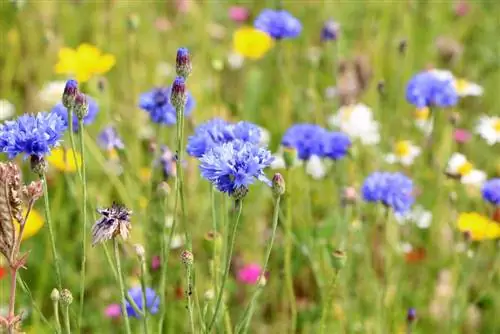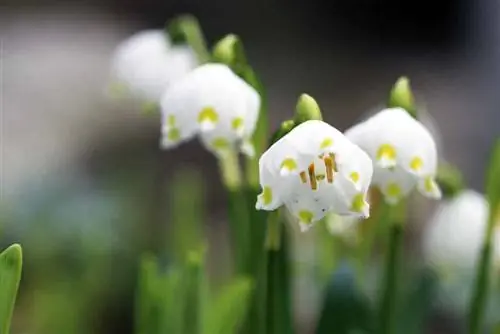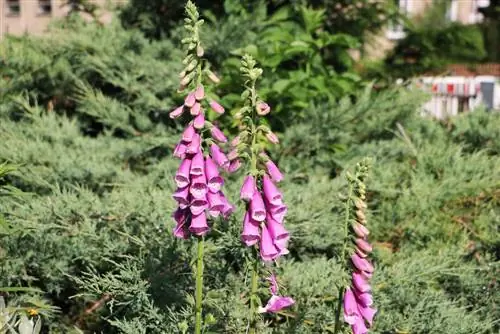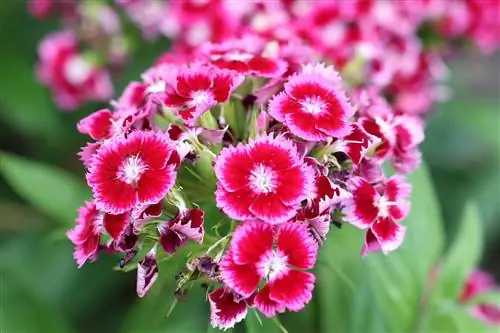- Author admin [email protected].
- Public 2023-12-17 03:39.
- Last modified 2025-01-24 12:45.
Annual summer flowers captivate with a multi-faceted floral display and are an adornment for every garden. These plants complete their entire life cycle within one year, including the flowering and growth phases, germination and fruiting. Summer flowers often come from tropical countries, which is why they are very sensitive to cold. The continued existence of the flower variety is guaranteed by the newly formed seeds.
Blue flowers
Cornflower
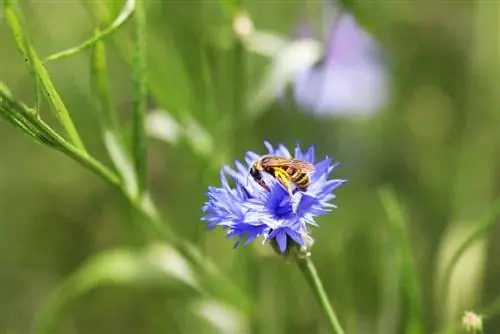
The cornflower has the botanical name Centaurea cyanus and often grows at the edge of fields and paths in these latitudes. It seduces with intense blue flowers and is suitable as a summer flower in a mixed flower bed.
- Easy-care summer flower
- Commonly found as a wildflower
- Flowering time in June
- Suitable as a cut flower
- Grows up to 40 cm high
Blue Lobelia
The blue lobelia is called Lobelia erinus in botany and is also colloquially known as men's faithful. The perennially blooming summer flower continues to produce flowers until severe frost. To start flowering as early as possible, you should sow early.
- Produces bright blue flowers
- Flowering period from May to November
- Sowing in February
- Plant seedlings in clumps
- Is well suited as an hanging basket plant
Virgin in the countryside
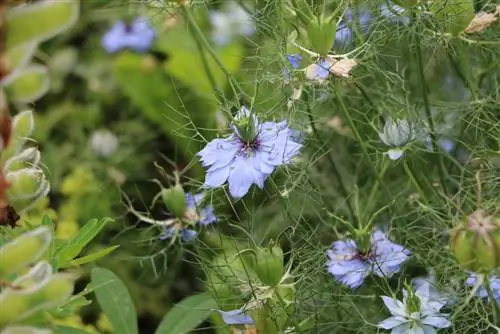
The maiden in the green has the botanical name Nigella damascena and is an enchanting summer flower that produces feathery and thread-like sepals and leaves. The plant is very resistant to drought and is suitable for both borders and garden beds.
- Extraordinary, light blue flowers
- Flowering period from June to September
- Growth height 20-30 cm
- Inflated fruit heads with capsules
- Good as a dried flower for arrangements
White flowers
Real Chamomile
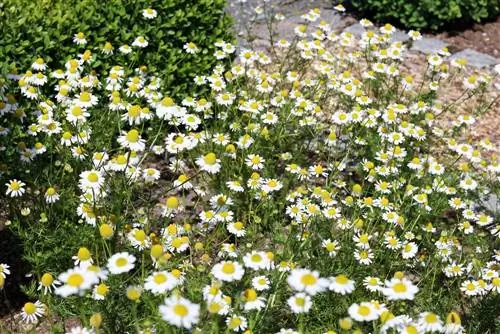
The real chamomile has the botanical name Matricaria chamomilla and also grows wild on the edge of fields and paths. Chamomile is a well-known medicinal plant with many he alth-promoting properties.
- White petals
- Highly arched and yellow flower head
- Flowering period from May to August
- Healing medicinal plant
- Growth height is 20-30 cm
Hardworking Lieschen
Hardworking Lieschen is called Impatiens spec. in botany. and earns its name from the fact that it blooms tirelessly, often from spring until the first frost in autumn. However, the summer flower is very sensitive to frost, so the gardener should only plant it after the Ice Saints in May.
- Flowering period from May to October
- Growth height up to 20 cm
- White flowers, also white filled
- Suitable as a potted plant for the balcony
- Needs partially shaded location
Coriander
Coriander has the botanical name Coriandrum sativum and is best known as a spice plant. The plant also produces beautiful flowers, although it is very sensitive to cold. For this reason, the seedlings should be cultivated indoors in spring.
- Flowering period from June
- Growth height between 20-50 cm
- Partly shaded location ideal for leaf growth
- Full sun location provides good seed harvest
- Cools well with lime in the soil and irrigation water
Indian Datura
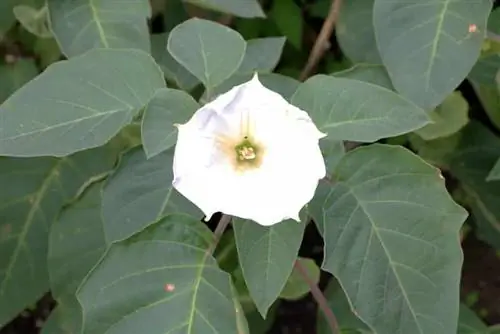
The Indian datura has the botanical name Datura metel and is an undemanding summer flower that produces hairy shoots. Flowers form throughout the summer, from spring until the first frost. However, the plant is very poisonous and is therefore not suitable for a family garden.
- White trumpet flowers grow extremely upright
- Flowering period from June to October
- Forms spiny fruits
- Sow seeds for indoor cultivation from February
- Plant seedlings outdoors from mid-May
Red flowers
Poppies
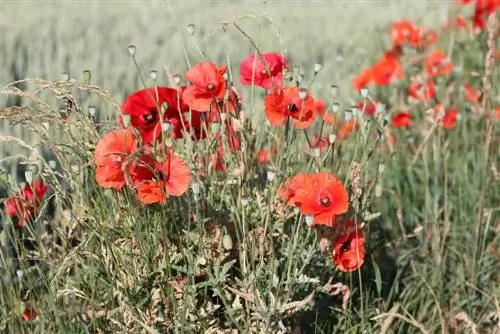
In botany, the corn poppy is called Papaver rhoeas and is often colloquially referred to as poppy or poppy. In the wild, this plant often grows close to the cornflower, with which it forms a colorful contrast.
- Requires open ground
- Intensely bright, red flowers
- Flowering time at the beginning of summer, from June
- Drought resistant
- Growth height 30-50 cm
Cigarette Flowers
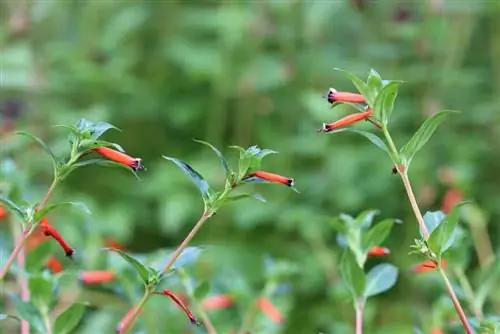
The cigarette flower has the botanical name Cuphea ignea and grows as a shrub-like summer flower. The unusual name is derived from the flowers, which are reminiscent of glowing cigarettes.
- Bright red flowers
- Blooms from May to October
- Growth height 30-50 cm
- Cannot tolerate extreme midday heat
- Can also be cultivated as a pot plant
Purple flowers
Funnel winch
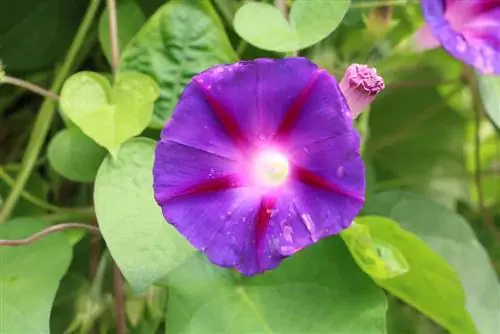
The morning glory has the botanical name Ipomoea purpurea and is very sensitive to frost, which is why it has to be sown again every spring. The plant is poisonous, and its seeds in particular can cause serious poisoning. For this reason, the morning glory is not suitable for family gardens.
- Purple flowers
- Flowering period from June to October
- Growth height is 0.5-3 m
- Doesn't grow too much
- Ideal as a flowering fence greenery
Elf Mirror
The elf mirror has the botanical name Nemesia strumosa and is a delightful summer flower, both for the garden as well as for the balcony and terrace. Depending on the variety, two-tone and multi-colored flowers are also available.
- Purple flowers are reminiscent of violets
- Flowering period from June to August
- Growth height is between 30-40 cm
- Sow seeds in March and April
- Does well as an hanging basket plant
Liver Balm

Liver balm has the botanical name Ageratum houstonianum and is a perennial summer flower that blooms from spring until the first frost. To ensure that new flowers continue to form, the liver balm must be cleaned out regularly. Due to its frost-sensitive properties, the plant should only be moved outdoors after the Ice Saints.
- Blue-violet flowers
- Flowering period from May to October
- Growth height 15-100 cm
- Needs a sunny location
- The bloom fades in the shade
Pink flowers
Corn Wheel
The corn wheel is called Agrostemma githago in botany and is a beautiful wild plant that also thrives in a garden bed. However, the plant is highly poisonous, so it is not suitable for a garden used by families with children.
- Medium to tall growth, 30-90 cm
- Deep pink flowers
- Flowering time in early and mid-summer, from June
- Ideal for mixed discounts
- Works well as a cut flower
Mallow
The cup mallow is called Lavatera trimestris in botany and is a long-blooming summer flower that can be combined very well with other flowers as a border plant. The growth is also wide, so make sure there is sufficient planting distance.
- Pink flowers with darker veins
- Flowering period from July to September
- Grows 0.5-1 m in height
- Good as a cut flower
- Perennial growth
Paper Flower
The paper flower has the botanical name Xeranthemum annuum and is an undemanding summer flower that blooms from mid-summer to early autumn. The plant can be cut as a dried flower just before the buds are fully open. Then hang upside down and store in a cool and airy place to dry.
- Flowering period from July to September
- Forms paper-like flowers in pink
- Growth height is between 30-70 cm
- Needs full sun location
- Make sure there is sufficient planting distance
Orange flowers
Nasturtium
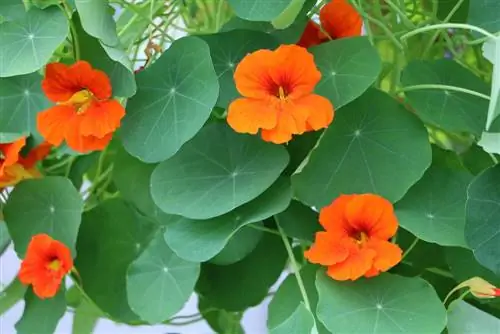
The nasturtium has the botanical name Tropaeolum majus and is a versatile climbing plant with continuous flowering properties. The bright orange flowers look exotic and are produced all summer long.
- Growth height 1-3 m
- A special feature are the edible leaves and flowers
- Suitable as a ground cover, hanging plant or for green fences
- Flowering time usually from July to October
- Often blooms until frost
Marigold
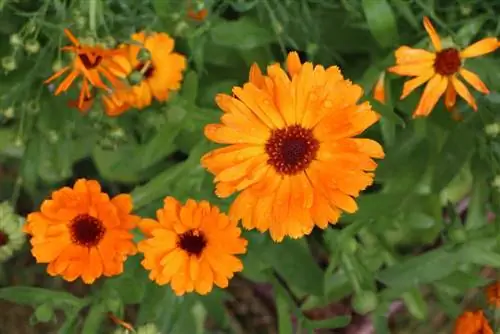
The marigold is called Calendula officinalis in botany and is a colorful, permanent bloomer. As a rule, the seeds that are sown only sprout gradually, so that these flowering plants decorate the garden landscape from summer to the end of autumn.
- Flowering period from June to November
- Orange flowers tolerate light frost
- Growth height up to 30 cm
- Healing medicinal plant
- Propagate themselves after first sowing
Goldbells
The golden bell has the botanical name Sandersonia aurantiaca and is also colloquially called the Chinese lantern, lantern flower and Christmas bell. The climbing tuber plant cannot tolerate temperatures that are too cold and is very sensitive to frost, so only plant it after the Ice Saints.
- Produces orange-yellow and bell-shaped flowers
- Flowering time in July
- Growth height is between 10-75 cm
- Grows climbing upwards
- Beautiful cut flower
Yellow flowers
Sunflower
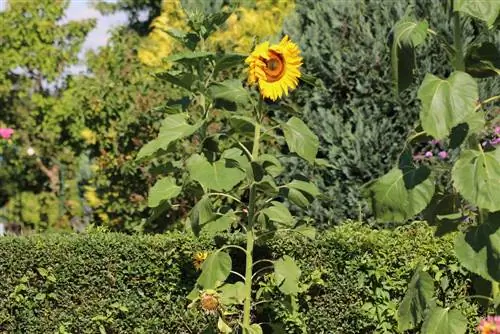
The sunflower has the botanical name Helianthus annuus and beautifies any garden landscape with its large flowers and powerful growth. Varieties with multiple stems are particularly recommended for the garden, as they bloom significantly longer.
- Bright yellow flowers with brown head
- Flowering period from July/August
- Is particularly suitable as a cut flower for vases
- Growth height from 0.5 to an impressive 5 m
- Ideal as bee food
Slipper Flower

The slipper flower is called Calceolaria integrifolia in botany and is a frugal, continuous bloomer. The summer flower grows like a bush and produces a multitude of bright flowers that appear inflated.
- Bright yellow, slipper-like flowers
- Growing abundantly in panicles
- Flowering period from April to October
- Partially shaded location is ideal
- Flowers quickly in too much sun
Juggler's Flower
The juggler flower has the botanical name Mimulus tigrinus and produces exotic-looking flowers for many weeks throughout the summer. The plant is also suitable as an hanging basket plant, as well as for keeping in pots on the balcony and terrace.
- Flowers are similar to orchids
- Bright yellow flowers are red spotted, spotted or tabby
- Flowering period from June to August
- Growth height is up to 30 cm
- Needs a lot of sun and moist soil
cockade flower
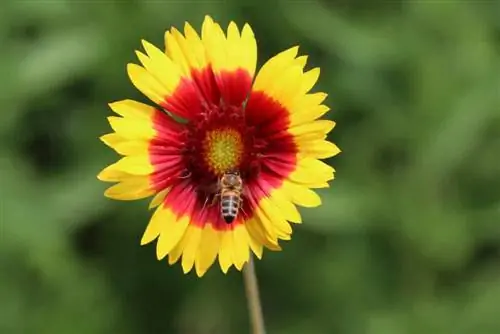
The cockade flower is called Gaillardia pulchella in botany and is a long-blooming summer flower that is very suitable for borders and garden beds. The bright flowers are produced from summer until the first frost in autumn.
- Flowering period from June to October
- Growth height is up to 50 cm
- Suitable for vase cutting
- Does not tolerate late frosts
- Don't plant out until mid-May

